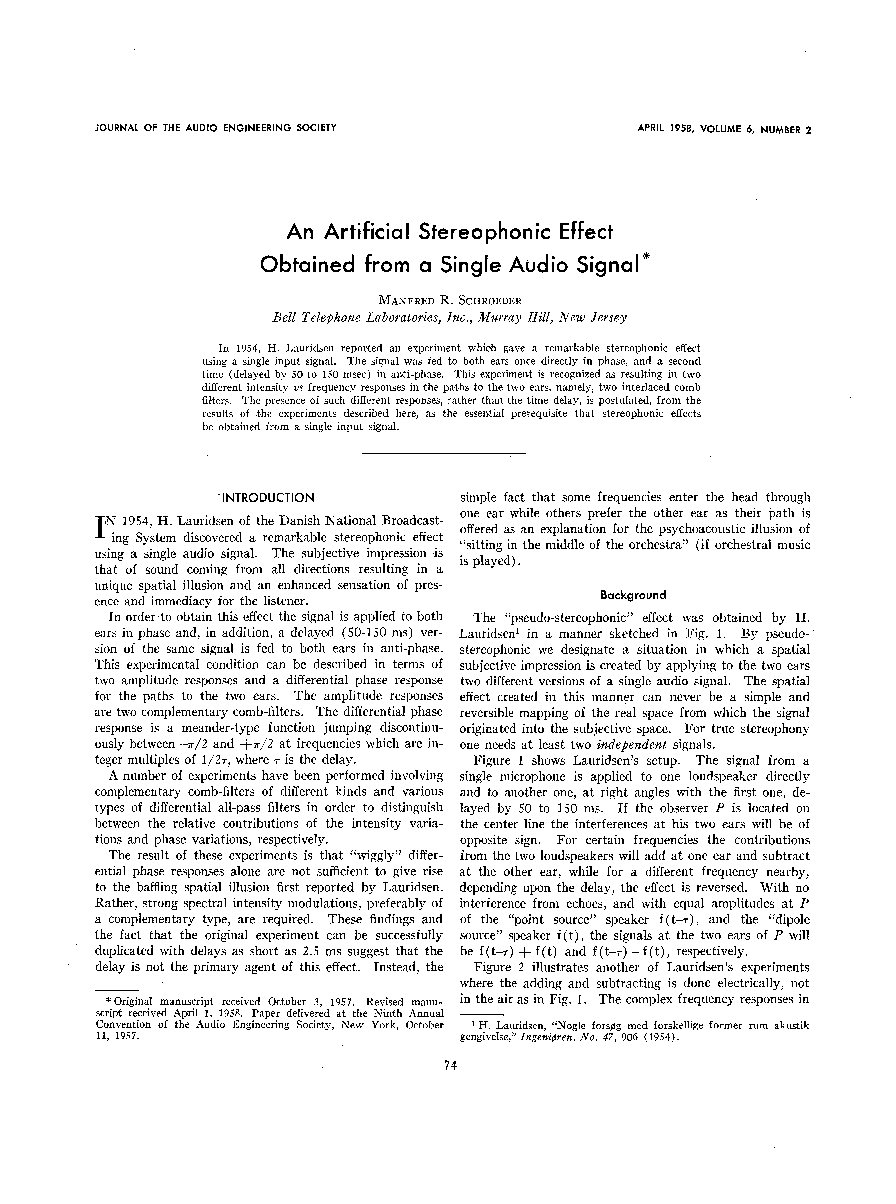Home / Publications / E-library page
You are currently logged in as an
Institutional Subscriber.
If you would like to logout,
please click on the button below.
Home / Publications / E-library page
Only AES members and Institutional Journal Subscribers can download
In 1954, H. Lauridsen reported an experiment which gave a remarkable stereophonic effect using a single input signal. The signal was fed to both ears once directly in phase, and a second time (delayed by 50 to 150 msec) in anti-phase. This experiment is recognized as resulting in two different intensity vs frequency responses in the paths to the two ears, namely, two interlaced comb filters. The presence of such different responses, rather than the time delay, is postulated, from the results of the experiments described here, as the essential prerequisite that stereophonic effects be obtained from a single input signal.
Author (s): Schroeder, Manfred R.
Affiliation:
Bell Telephone Laboratories, Inc., Murray Hill, NJ
(See document for exact affiliation information.)
Publication Date:
1958-04-06
Import into BibTeX
Permalink: https://aes2.org/publications/elibrary-page/?id=238
(444KB)
Click to purchase paper as a non-member or login as an AES member. If your company or school subscribes to the E-Library then switch to the institutional version. If you are not an AES member Join the AES. If you need to check your member status, login to the Member Portal.

Schroeder, Manfred R.; 1958; An Artificial Stereophonic Effect Obtained from a Single Audio Signal [PDF]; Bell Telephone Laboratories, Inc., Murray Hill, NJ; Paper ; Available from: https://aes2.org/publications/elibrary-page/?id=238
Schroeder, Manfred R.; An Artificial Stereophonic Effect Obtained from a Single Audio Signal [PDF]; Bell Telephone Laboratories, Inc., Murray Hill, NJ; Paper ; 1958 Available: https://aes2.org/publications/elibrary-page/?id=238